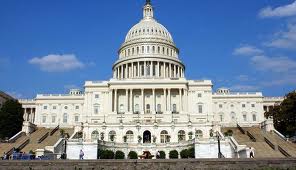Congratulations to the four winners of Boar Money’s BofAML competition!
George Creasey – Twitter to Spread its Wings in IPO
Twitter, the microblogging social network that everyone jumped on once our parents figured out how to work Facebook, has filed for its IPO, set to value the company at an estimated $10.9 billion, yes, with a ‘B’. This is despite the fact that Twitter has never actually made a profit. In fact, it has accumulated approximately $482.5 million worth of debt since its launch in March 2006.
The inevitable comparisons will be made between Twitter and the other blue social network: Facebook. Facebook filed for its IPO in May 2012, and despite struggling straight away, has regained its value after a rocky year. Twitter will be sure to learn from Facebook’s mistakes, like preparing for its IPO privately, avoiding the hype which led to Facebook being overpriced. And choosing to list on the New York Stock Exchange will avoid some of the technical troubles Facebook had on the NASDAQ.
Twitter has already been acquiring other companies including Vine which already has over 40 million registered users. Vine even beat the Facebook-owned app Instagram to popularising short videos, and then prevented Instagram’s posts from being integrated into Twitter by only allowing links to be posted. Take that, Zuckerberg.
Twitter generates 87 percent of its revenue from advertising, which means that your timeline is only going to get busier
Twitter generates 87 percent of its revenue from advertising, which means that your timeline is only going to get busier. If that isn’t scary enough, Twitter generates the other 13 percent of its revenue from Data Licensing. Did someone say NSA?
So why on earth would people invest in a company which seems to be haemorrhaging money? Firstly, 500 million tweets sent every day worldwide is kind of a big deal, and secondly, Twitter has developed a unique system which allows advertisers to bid against each other to be the next ‘promoted tweet’ and sit at the top of your timeline. It is unique ideas like this which have led to analysts predicting twitter’s advertising revenue sales to increase by more than 100 percent by the end of this year.
Other areas of potential revenue stream for Twitter are news and TV advertising. Big news always breaks fastest on Twitter, leaving news sources like the BBC and the Guardian playing catch-up from the start. You’ve probably noticed how every advert seems to have a #hashtag in it these days, in companies’ feeble attempts to get their products trending, when really, we all know that the only things that trend are Justin Bieber’s new haircut, or who got kicked off X Factor this week. It is the potential monetisation of revenue in these areas which no doubt has investors ready to splash the cash.
Twitter will want its IPO to help cement its future as the go to social media app and news source, and prevent it disappearing as quickly as a snapchat of a small blue bird tweeting away.
Alex Weaver – Royal Mail privatisation: Sold on the cheap?
It has just been over a month since the government sold off 60% of Royal Mail, a privatisation even Margaret Thatcher thought was a step too far, having stated that she “was not prepared to have the Queen’s head privatised.”
The share price closed at 557p on 11th November, with the government having sold the shares at 330p, a whopping 67% percent return to institutional and retail investors. Shares soared 38% on the day of listing and have continued to climb – despite industrial action being announced by the unions. So did Business Secretary Vince Cable sell the family silver on the cheap?
It is common for an initial public offering (IPO) of shares to rise on the day of listing. The underwriters could have underestimated the demand for the shares resulting. Indeed it is difficult to value a company that has only ever had one owner – HM Government. However, it was clear from the oversubscription of the shares that demand was going to be high. The large government privatisations of the 1980s, including British Gas, British Airways and Rolls-Royce, all rose significantly on their listing date.
The backlash has been large, which is understandable when it is ultimately the taxpayers who have been shortchanged.
By selling at 330p a share, the government valued Royal Mail at £3.3 billion, with advice from five major banks. J.P. Morgan, the US banking giant who was not selected to run the deal, later said it could have valued Royal Mail from £7.75 to £9.95 billion, nearly three times the valuation that Royal Mail was given. Even if J.P. Morgan’s valuation turned out to be too high, had the government sold at the current price of 557p (valuing Royal Mail at £5.6 billion), it would have raised approximately £1.18-1.36 billion more for HM Treasury. In a period of austerity this money would have eased some of the government’s financing issues.
The backlash has been large, which is understandable when it is ultimately the taxpayers who have been shortchanged. Vince Cable described the share price rise as “froth” and preferred to look at where it settles at in three to six months time.
In addition to the standard fees payable to the banks for the sale, there is an additional discretionary fee payable and there is speculation that this could be withheld. It is only £4 million, a far cry from the current implied loss to HM Treasury. The question remains that in a buoyant London IPO market, why didn’t the banks push for a higher listing price and ultimately strike a better deal for the taxpayer in the first place?
Justin K.S. Lim – Should the Royal Mail be privatised?
The government’s decision to privatise Royal Mail has caught the eye and attention of the media and the general public. Following the Postal Services Act 2011, it was announced that the government was to privatise the Royal Mail through a flotation on the London Stock Exchange (LSE) on the 15th of October 2013, at 330p a share.
Since Royal Mail’s debut in the market, the share price has rocketed. On the first day of trading, its market share price has already risen by more than 38% to 456p, with the sale of Royal Mail coming under scrutiny with allegations suggesting that the IPO price was too low. The allegations have also put Liberal Democrat Business Secretary, Vince Cable’s position in questioned, as many believe that Royal Mail was undervalued by as much as 50%. But should it have been privatised?
The Internet has certainly facilitated faster, cheaper and easier means of communication and the expansion of e-commerce. This phenomenon has created a boom in internet shopping. Undoubtedly, this is affecting the 497 year old portal service. By the means to adapt and to change, the government would require more investment to revamp the business. However, the government is reluctant to invest large sums of money at time when they are trying to cut public spending and borrowing.
Despite last year’s operating profit of £400m, the Royal Mail is still making much less profits compared to European counterparts. Countries like Germany have already privatised their mail services and retained their six days deliveries.
There seems to be a painful inevitability in the Royal Mail’s privatisation. The company is no longer a monopoly and it is facing fierce competitions.
Moreover, Royal Mail is competing with firms like TNT, FedEx and UK Mail following the opening up of market in 2006. The above have all underlined the importance of privatising Royal Mail.
There seems to be a painful inevitability in the Royal Mail’s privatisation. The company is no longer a monopoly and it is facing fierce competitions. A cash injection will allow the Royal Mail to revamp their business, grow and to return stronger in a competitive market. On a less economic level, the privatisation of the Royal Mail symbolises something more, the loss of another government run business. Should we be concerned that this is happening, or is the free market really the way forward?
Nick Wilson – In at the deep end: The US Debt Ceiling
As Argentina strikes a provisional deal to structure it’s debt repayments and Spain sees real economic growth for the first time in over two years, you could be forgiven for thinking that we are leaving the spectre of recession behind. However, the pervading story in the markets over the past few weeks is that of the U.S. debt ceiling, whereby the world’s largest economy was a mere 24 hours away from defaulting on its debt repayment obligations.
The short-term cause of this is simple – in the last fifteen years the U.S. has been less than frugal with its money. Bush-era tax cuts to big business, coupled with larger social security payments and an incredible increase in the trade deficit over this period are just some of the reasons. When added to the $800 billion war on terror and the quantative easing program, it is clear how America has accumulated $17.1 trillion worth of debt.
This begs the question, in the world’s richest country, why did it go right to the wire to forge a vital deal to extend the ceiling? Until the Thursday 17th agreement, for the first time in seventeen years. the Fed had been shut for two weeks at a cost of billions of dollars a day due to disagreements between Democrats and Republicans about the content of the extension, some conservative Republicans and the Tea Party demanding concessions on public expenditure programs like ‘Obamacare’, the mooted public health system, and the Democrats unwilling to give them any ground. However, there is the distinct possibility that this could all happen again: as debt skyrockets further the extension is due to last until mid-February and the public finances package will expire before that.
In the last fifteen years the U.S. has been less than frugal with its money
When dealing with astronomical numbers like this, it’s easy to lose perspective; introduced in 1917, the ceiling has been raised seventy-four times since March 1962 and every President over the past ninety years has added to national debt. In fact, it’s important to look closer to home and there are lessons we can learn to prevent a similar situation – the UK’s public debt is 90% of GDP and increasing further. Watch this space.





Comments